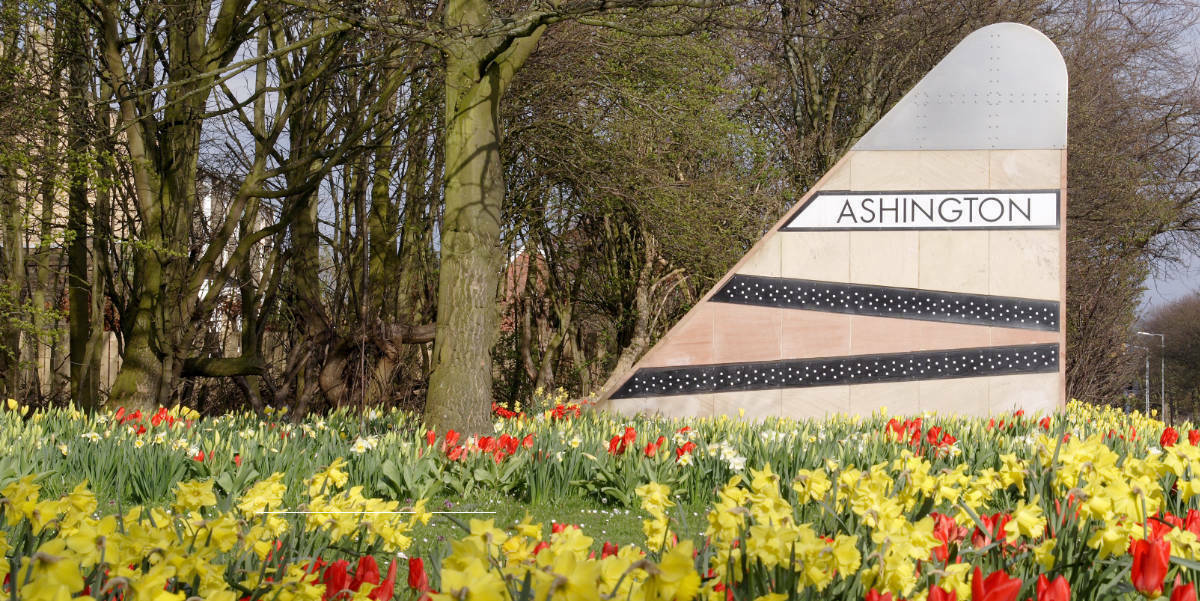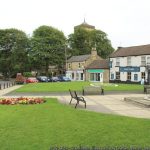
Welcome to Ashington: The World’s Biggest Mining Village or should that be a town?
Ashington used to be farmland, that’s the hot take for the day. At some point in the 19th century, locals realised it was a beautiful place to mine coal and the rest is history. Want to know more? Well, luckily you came to the right place.
We are about to do an in-depth deep dive into the background of Ashington. Here, you can learn about its history, people, and best attractions. Whether you are planning a day trip or a fortnight’s holiday, here are all the things you ought to know about Ashington before you go.
Early History of Ashington
Although the current population of Ashington is a healthy 27k+, it wasn’t always so. Nor was this one of those towns that grows slowly over the years. No. Ashington arrived all at once, kicking and screaming and delivering thousands of coal miners into one place to work hard and play harder. Ashington didn’t have a slow growth period. It exploded onto the map and didn’t stop growing. There is a reason this town was once the largest mining village in the world.
Before the wealthy Duke of the area decided to dig for coal, the area was nothing but fields, woodland, and pretty meadows. There is not even any mention of the area in the Domesday Survey. It’s highly likely that there were settlements towards the coast which thrived on fishing, but further inland where the former village of Ashington grew up, there was nothing but a few baffled sheep farmers.
The Medieval Era
The essential nothingness that made up the early days of Ashington continued all the way up to the 1870s. At the very most, the area the town sits in was a passing place, somewhere roads passed through to connect to other places. Nearby, the village of Bothal has a 14th-century castle (now a private home) and a 9th-century church. It is safe to say the area has seen people, perhaps the odd farm or house. However, up until the industrial era, the fields persisted. Let’s pause a minute and then get to the story of how one wealthy Duke changed the course of the land forever.
Fun Facts and Ashington Trivia
We always like to interrupt all that history here with a glimpse into the best town gossip. We researched what locals love and hate about Ashington, and this is what they had to say…
- Ashington was once the largest mining village in the world. It is this reputation that helped it grow into the town we know and love today.
- In 1934 a group of miners got together and took painting classes. They became known as the Pitfield Painters.
- Jack and Bobby Charleton of legendary England 1966 fame grew up playing football in these fields.
- The chimneys on the Alcan building were in Billy Elliott.
- The regional accent is a Geordie accent, but the local dialect s known as Pitmatic. It takes its roots from the pit crews who came from all over the north of England to work here, all at once time.
- Ashington Colliery opened in 1867 and shut in 1988. The town’s second colliery, the Woodhorn Colliery, opened in 1894 and closed in 1981. Thatcher was responsible for closing most of the northern coal mines that were still operating by her rule. She made serious enemies in the north of the UK.
- The Woodhorn Colliery Museum opened in 1989 with a focus on preserving the town’s industrial heritage. The museum features the original pit buildings and yard. It is now a Scheduled Ancient Monument, as well as a cool attraction to visit in town.
As you can see, Ashington has a whole lot more fun hidden behind those walls than you may first have thought. Ok, let’s delve back into this history so we can get through it and onto the good stuff – Ashington’s attractions!
The Industrial Period in Ashington, Northumberland
In the late 1700s, all that existed here was a farm named Ashington with a few homes. Its possible invaders sailed the river Wansbeck, the local river. If so, the name could refer to Saxons or Viking invaders who settled the thick ash forests here.
In the 1840s, the peace and sanctity of those few sheep fields changed forever. The Duke of Portland had the inspirational idea to open collieries in the area. The potato famine was in full swing at the time, so he sought to attract Irish refugees by giving them work, pay, and a place to live. At its height, an estimated 5,000 miners lived and worked in town. They all had families with them, so you can see how it became the largest mining village in the world.
Almost overnight the Duke changed the town from a bare field to a few streets. He sold parcels of land to wealthy investors who created the collieries. Many of these corporate investors built housing for the workers to attract them. One of the collieries built 300 houses alone.
The Ashington Coal Company built parallel rows of houses in the middle of the countryside. Between 1870 and 1888 they built most of the town. By 1888 the area had become its own parish and required a church. At the time of the boom, a Grand Hotel opened, the townsfolk built a Town Hall, and they erected the Central Arcade. More churches opened as more miners of different belief systems flocked here. In the end, there was a Methodist Church and a Holy Sepulchre church, too.
Mining Begins in earnest
The first mining shaft opened in 1867. Since Ashington was just a farmhouse back then, they named the pit for the nearby village of Bothal. The Bothal Mining Shaft quickly expanded to contain five collieries in the area. The arrival of the collieries meant a growing need for the arrival of the railway, which promptly followed.
The town developed its own local accent due to the influx of miners from all over the country and beyond. At the height of its popularity, this mining village had five cinemas. We wonder at what point a village crosses over the line and becomes a town. We’re not sure historic Ashington knew either.
The Telford Bridge was constructed in 1831 & the St George’s United Reformed Church was built in 1860.
Ashington was linked to Blythe by the railway line in 1872. This helped them move the coal around. Unfortunately, the railway line closed in 1964 as part of plans to make the national railway lines more efficient. They named the railway station the Hirst station. It ran along the edge of the valley on a wooden viaduct which would have been a scary ride.
The type of mining performed in Ashington was deep pit mining effective but dirty and dangerous. Back then, it was how everyone got the coal to power their homes. However, the move to gas and government policy aimed at destroying union power put an end to this.
Ashington Hospital
Ashington received its first hospital in 1913. The hospital would treat the coal miners who suffered injuries below the earth. and later those recuperating from their heroics in WWI. Since this town was full of young men, it suffered heavily during both World Wars. Many youngsters from Ashington went to France in WWI and overall 736 young men from Ashington are on the national roll of honour.
The town gained Hirst Park in 1915 which was a rare oasis of greenery in an otherwise increasingly built-up area. It remains popular with both locals & visitors to this day.
As for the hospital, it was expanded twice, in the 50s and then again in the 60s. After expanding to accommodate all the new people in town, the hospital was closed in the mid-90s. There were no longer the people to sustain it, probably as the mines had largely closed. The local government replaced it with a newer, shinier but smaller hospital on the opposite end of town. The last of the old hospital buildings were demolished in 2004.
Mining remained the town’s stalwart in the post-war era right up until the 1970s when the country’s focus began to change.
Modern Ashington
The 80s and 90s brought huge unemployment to this area when they shut all but one of the mines. The last one closed in 2005, leaving behind a huge village with a lost heritage and no work. Plans suggested back in 2006 for an open cast pit never made it off the ground. Locals objected.
The mines the area had in the past were underground, out of sight and out of mind. An open cast pit has a staged descent into the ground. This eats away at huge chunks of the countryside and would lead to heavy load traffic which leaves holes in the roads.
Although the coal mines all closed, Ashington commerce took a turn towards technology. The arrival of a business park on the outskirts of town gave new gainful employment to some of the residents. There has been an issue with employment in the area, but this is resolving itself over time with the arrival of new shops. There is work towards the coast and many residents commute to Blythe to make money. Ashington is known as a delightful place to live that has the community spirit of a village in town form.
Nobody really knows whether modern Ashington is a town or a village. The locals debate it. The record holders dispute it. If it is a village then it is the largest in England – and perhaps the largest in the whole of the UK.
If capitalised correctly, that could make a sweet tourist hotspot for a town that could use the revival of national interest. Ashington started as one Duke’s dream. An attempt to give food and shelter in exchange for perilous work. It continues to be a successful town – or village – to this day. We bet he’s happy with a job well done.
Famous People from Ashington
During this part of any given tour guide, we like to review the famous people in town. Whether long dead or newly skyrocketed to fame, you can find out all about the famous people from Ashington, below.
- Soprano singer named Sheila Armstrong is from here, as is Tenor Andrew Kennedy
- Victoria Cross recipient Hugh Cairns was born in Ashington before becoming a Canadian National. He was also the recipient of the Légion d’honneur
- Actor and director Darren Newton probably best known as Gavin Hindle from The TV Soap Eldorado
- Everest summiteer Richard Pattison
- Singer/songwriter and DJ Yasmin Perry is from Ashington
- Footballing brothers Jack & Bobby Charlton are from the town. Both featured in England’s 1966 World Cup Winning Squad.
- Last by no means least Footballer Jackie Milburn (Wor Jackie) who played for both Newcastle United & England in the 1940s & 50s

You can find the Jackie Milburn statue pictured above on Station Road if you fancy an Instagram moment.
Now that we have the famous faces out of the way, we can talk about the best attractions in Ashington. Lie all you like but we know it’s your favourite bit…
Things to See and do in Ashington
Without further ado, here are all the best things to see and do if you are in Ashington for a visit.
Historic Sites and Landmarks
Although this was a farming area up until the coal mining crews moved in, there are a few nearby historic sites and landmarks. Bothal Castle, still in use as a stately home, lies near Ashington and Morpeth villages. Although not open to the public, you can see this lovely old building from afar. It has a courtyard and an archway, then through the archway is a private residence… oh how the other half live…
There is a Telford Bridge 4.6 miles from town. The architect Thomas Telford created miraculous bridges all over England. This bridge would have gone up between the late 1800s and the early 1900s.
Museums
The Woodhorn Museum is a popular Northumberland museum and one of the best attractions in town. Visitors love learning about the history of the area, and the industrial heritage of the town. Woodhorn is a glimpse into the coal mining world of the 18th and 19th centuries. The industry that powered Ashington’s growth, and now this museum records it for posterity. Go have a gander. They do have contemporary art exhibits and routinely run events too if coal is not your thing.
If you simply must have more museums, head down to nearby Newbiggin By The Sea, and visit the Maritime Centre. This place tells you more about life by the sea in industrial era Northumberland. The fisherfolk here has a long history with herring and other fishes. The museum documents the lives and times of the fishing people that lived in it.
Outdoor Attractions
You can’t miss the Queen Elizabeth II Country Park near Ashington. This is where you come to walk the dog, enjoy a swim in the lake, fish, sunbathe, or enjoy a coffee at the restaurant behind the car park. There’s even a Premier Inn nearby if you want to spend the night. The park sits behind the Woodhorn Museum, so you can make a day of it and do both at once. The park has a lovely lake that’s ideal for walks but is also part of a cycle route. The park was part of the jubilee celebrations.
As well as having a lovely outdoor space and a museum, the park area features the Woodhorn Narrow Gauge Railway. This is an electric train that volunteers run. It takes passengers around the countryside loop and back again in little open-sided carts. Probably not the best activity in the rain, but cheap as chips and locally run. These are ex-mining locomotives lovingly restored in 1991.
They have three trains which run over a mile-long section of track. Miners would have used these trains to transport the coal from the colliery down to the shore or train station for transportation farther afield. They are currently experiencing problems re-opening after covid due to funding issues. If you love trains, the volunteers would appreciate the donation.
Take a wander through the Wansbeck Riverside Park if you feel inclined. There is a huge kids’ play area here that they love. You can walk as far as Stakeford Bridge alongside the river, which is a popular place for dog walkers and pram pushers. The park covers 112 hectares in the middle of town. You will find it on the south of town, near the A189.
Sports and Recreation
Ashington has its own leisure centre. This area allows locals to exercise in a safe environment. Like most friendly local leisure centres, it has its own fitness suite/gym. They have a swimming bath inside too, but it is a minimal local facility. The Active Northumberland branch run the facilities here. There are also sports halls to hire for things like 5-a-side football or dance aerobics.
Ashington has its own football club. Established way back in 1883, Ashington AFC are currently members of the Ebac Northern League. They are a nice small club to support and although their trophy cabinet is not overflowing they did reach the FA Cup Third round back in 1927-27. Having said that they did win the Northumberland Senior Cup in 2013.
If you are in town during the season you can find their home ground at Woodhorn Lane. You can normally pay at the gate however booking a ticket will give you a nice souvenir of your visit.
Ashington RFC is the local rugby league team. They are in the Northumberland Rugby Union. They play at the recreation ground on High Market in Ashington. Their full name is Ashington Joint Welfare RFC. That industrial coal mining heritage reflects in everything this team do.
Since Ashington is near Blythe, it has a choice of golf clubs. There is the Longhirst Hall Golf Course to the North, the Newbiggin Golf Course to the east – this one is closest – and the Morpeth Golf Club to the west. To the south, you have the Bedlingtonshire Golf Course just in case you were short on choices.
Shopping and Retail
Ashington isn’t a known shopping town. There are all the usual suspects, including a McDonald’s, an Argos, and a Factory Shop. You have a business park outside of town but it’s less shopping, and more tech companies. After the mines closed here, the town attracted a few new businesses in the form of technology. Otherwise, everything you need is in the town centre. The best shopping is with the flea and street market. This takes place every Tuesday in the town centre. Main street becomes flooded with deals on clothing, trinkets, fruit and veg, and other bargains.
Other Notable Attractions in Ashington
If you are spending any more than a day or two visiting Northumberland, we suggest you add the following points of interest to your itinerary:
- Go to central and enjoy a night out
- Eat at the Conchie Pub
- Visit the Block and Tackle
- Head South to the seaside attractions at Blythe
- Head East to Newbiggin and have a good day out
How to Get to Ashington?
Now you know almost everything about this sunny northern town – except how you get there. Follow our directions and please don’t come calling if you get lost. Tech guys invented sat nav for a reason, and we are not Google.
By Road
Head north on the A1 out of London until you reach the A189.
By Rail
There used to be a railway here, but no more. There are plans for a future one. Aim for Blythe and take an Uber.
By Air
The nearest airport is Newcastle International Airport.
By Sea
You are near New Bigging by the Sea. It’s only about three miles away so if you must anchor up there and grab a taxi.
Got Five More Minutes?
Still, browsing potential places to have your next staycation? If you are looking for holiday destinations within the UK, then we are happy to help. Browse our infinite and growing list of travel destinations or follow us on Facebook.
Header Image: Gail Johnson/Shutterstock.com




